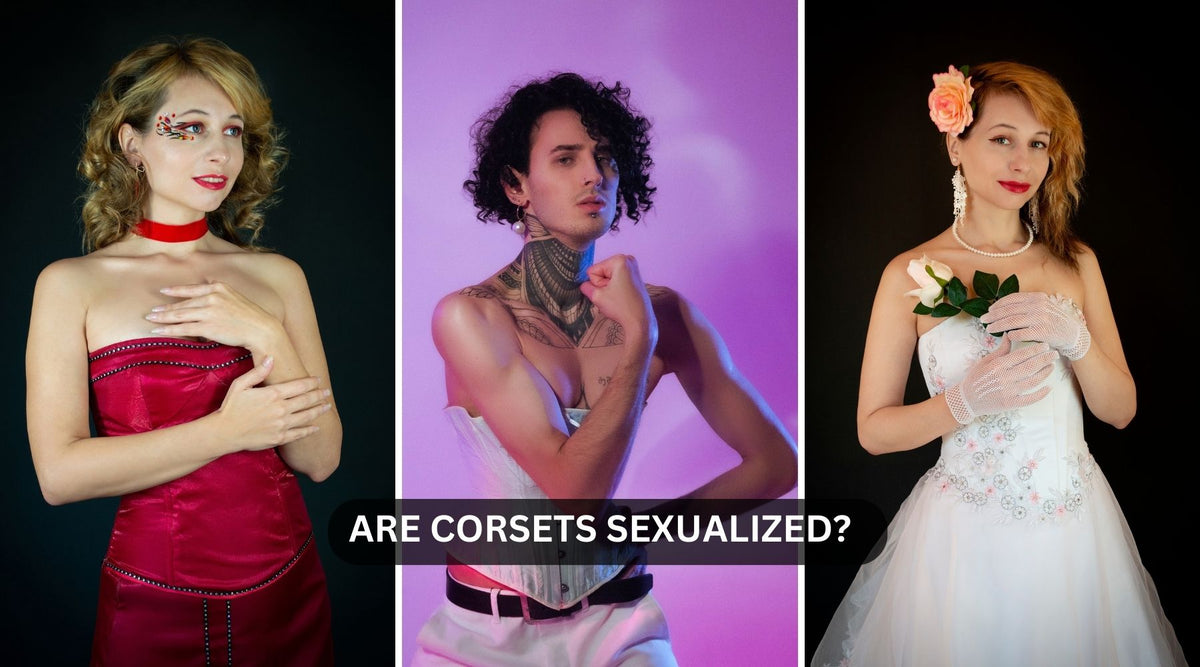

Yes, corsets are sexualized and was a symbol of femininity, beauty, and elegance throughout history.
Corsets have a complex history and can be seen from different perspectives. Historically, corsets were worn by both men and women to achieve a fashionable silhouette, emphasizing an hourglass figure in women.
While corsets were often seen as a symbol of beauty and femininity, their main purpose was to shape and support the torso, not to make someone look like a sexual object.
So let me give you the answer to your question
Are corsets sexualized?
Yes, corsets have been seen as sexual in certain times and situations in history.
For example, during the Victorian era, corsets were worn to achieve a desirable figure, and their tightness and constriction were sometimes associated with ideas of seduction and sensuality.
This sexualized view was reinforced through books, art, and popular culture of that time.
In modern times, corsets are often connected with lingerie and fetish clothing. They can be intentionally designed and marketed to emphasize sexual attractiveness.
It's important to understand that the perception of corsets as sexual or not can vary a lot depending on the situation, cultural norms, and personal opinions.
What does the corset symbolize?
The corset was a symbol of femininity, beauty, and elegance throughout history, as women would tightly lace corsets to cinch their waists.
Corsets have also been a fashion statement, symbolizing style and personal expression. In recent times, corsets have been reclaimed as a symbol of empowerment and rebellion against societal norms.
How has the perception of corsets changed over time in terms of their sexualization?
The way people see corsets and their sexualization has changed a lot over time. In the past, corsets were mainly worn as undergarments to shape and support the torso, especially the waist.
From the 16th to the early 20th century, they were considered a normal part of women's fashion.
They were seen as important for achieving the fashionable hourglass figure with a small waist and emphasized bust and hips.
The sexualization of corsets was based on the belief that a small waist made a woman's curves more noticeable, which was seen as desirable and attractive.
However, the sexualization of corsets has also been criticized throughout history. In the late 19th and early 20th centuries, there were movements advocating for women's freedom and questioning restrictive clothing, including corsets.
These movements argued that corsets were physically uncomfortable, harmful to women's health, and perpetuated unrealistic beauty standards.
In the 20th century, the perception of corsets shifted as fashion trends changed.
More relaxed and casual clothing styles became popular, like flapper dresses in the 1920s, and corsets became less common in everyday fashion.
Corsets were mostly associated with special occasions or lingerie.
In recent years, corsets have become popular again, but people's perception of them has changed. The sexualization of corsets is now more complex, and they are often embraced as a way to express oneself, promote body positivity, and feel empowered.
Corsets are now commonly used in alternative fashion, cosplay, and burlesque performances, where they can be seen as symbols of sensuality and confidence.

Checkout our Comfortable Modern Corsets
Final Words: Are corsets sexualized?
Corsets can sometimes be seen as sexual because they enhance the body's curves and can be considered seductive.
However, it's important to remember that this sexualization is not inherent to the corset itself, but rather a result of societal views and cultural norms.
People wear corsets for different reasons, such as fashion or self-expression, and the sexual meaning can vary depending on the person and the situation.
For some people, wearing corsets can be a way to embrace and celebrate their bodies, regardless of their size or shape.
We should respect individual choices and not assume someone's intentions based solely on wearing a corset.
Corsets are now available in a wider range of sizes and designs, catering to more diverse body types.
This inclusivity has allowed individuals to explore corsets as a fashion choice that suits their personal style and empowers them.











